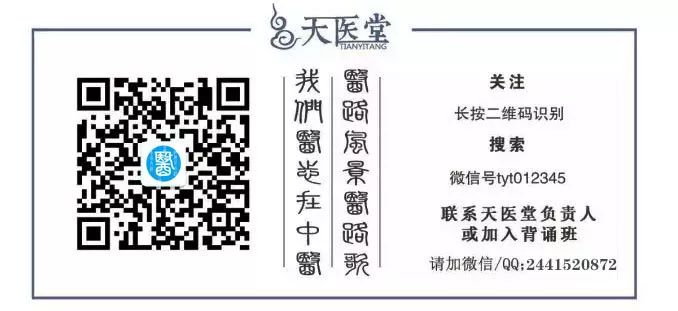Introduction: Pulse diagnosis is a complex and challenging diagnostic method. Today, let us learn from the experiences of Mr. Li Shimao.
Although pulse patterns are varied and changeable, as long as one understands the principles of pulse formation and the factors influencing pulse changes, one can comprehend the various pulses without confusion.
The principle of pulse formation can be summarized as the interplay of qi (气) and xue (血). The pulse is the vessel of blood, relying on blood for fullness and on qi for propulsion.
As stated in the Introduction to Medicine: “The pulse is the body of qi and blood, and qi and blood are the function of the pulse.”
All the various changes in pulse patterns are reflections of changes in qi and blood. Qi represents the yang aspect, while blood represents the yin aspect. The changes in qi and blood are essentially changes in yin and yang.
As noted in the Su Wen: On the Subtlety of Pulse: “The subtlety in the pulse must not be overlooked. Observing it has its principles, starting from yin and yang.”
Qi and blood are the keys to unlocking the maze of pulse diagnosis.
If one can fully grasp this principle, then the myriad of pulse patterns can be interconnected, allowing for a broader understanding without being confined to the numerous classifications of pulse patterns.
As stated in the Pulse Diagnosis Guide: “In ancient times, pulse diagnosis was simple, with few terms like floating and sinking, yet the conditions were clear. In later generations, the terminology became more complex, leading to confusion, as if the refined had become coarse, obscuring clarity. This is the error of seeking traces without understanding the principles.”
1. The Influence of Qi Changes on Pulse Patterns
1. Qi Excess
When qi is abundant, the force that propels the blood vessels is vigorous, causing qi and blood to surge outward.
When qi and blood surge outward, the pulse appears floating, surging, solid, large, long, and broad.
When qi and blood are in motion, the pulse appears rapid, hurried, agitated, and urgent.
2. Qi Stagnation
When qi is obstructed by pathogens, the flow of qi is hindered, or when emotions are repressed, leading to qi stagnation, the qi cannot circulate freely to propel the blood vessels, resulting in a pulse that is deep, hidden, firm, rough, slow, thin, short, knotted, or even absent.
When the flow of qi is obstructed, the yang qi cannot spread, and the meridians lose the warmth and nourishment of yang qi, leading to contraction and tightness, resulting in a pulse that is wiry, tight, thin, or rough.
These pulse patterns may appear insufficient, but they are actually caused by excessive pathogenic qi.
The distinction from a weak pulse lies in the fact that a deep pulse has a kind of surging and agitated quality, unwilling to be still, unlike a weak pulse which lacks strength. This is how one differentiates between deficiency and excess based on the strength of the pulse.
Regarding why different pulse patterns such as deep, hidden, rough, short, and slow can arise from the same pathological mechanism, this is due to the varying degrees and locations of qi stagnation, as well as the different causes of qi stagnation, leading to different pulse patterns from the same pathology.
Although pulses may differ, the principles remain interconnected.
3. Qi Deficiency
When qi is deficient and cannot propel the blood vessels, the pulse appears weak, slow, fine, weak, soft, intermittent, small, short, or rough.
When qi is deficient and cannot maintain its position, qi may float outward, resulting in a floating, empty, scattered, hollow, fine, soft, or leather-like pulse.
When qi is deficient and attempts to compensate, the pulse may be rapid, yet it lacks strength; the more rapid it becomes, the more deficient it is. If qi deficiency is severe, the pulse may lose its soft and harmonious quality, presenting as a strong and forceful pulse, which indicates the leakage of true qi and should not be mistaken for a solid pulse.
2. The Influence of Blood Changes on Pulse Patterns
1. Blood Excess
When blood is forced by pathogens, it surges and flows rapidly, leading to a pulse that is slippery, rapid, hurried, or urgent.
When blood flows outward, the pulse appears floating, surging, solid, or long.
2. Blood Stasis
Due to obstruction by pathogens or qi stagnation, blood flow becomes stagnant, leading to unfavorable pulse pathways, resulting in a pulse that is deep, hidden, firm, rough, thin, small, short, hurried, or knotted.
3. Blood Deficiency
When blood is deficient and cannot fill the blood vessels, the pulse appears thin, small, soft, short, or rough.
When blood flow is interrupted, the pulse may stop, appearing hurried, knotted, or intermittent.
When blood is deficient and cannot maintain its position, qi loses its attachment and may float outward, resulting in a pulse that is floating, empty, fine, hollow, scattered, moving, or agitated.
When blood deficiency leads to the meridians losing nourishment, the pulse becomes tight and wiry.
For clarity, qi and blood are discussed separately. Although there are emphases in the pathological changes of qi and blood, they often influence each other and are inseparable.
Qi and blood are the foundation for the generation and change of pulse patterns. Understanding this principle allows one to “know the essentials in a single word.”


— THE END —
▶ Copyright Statement:
1. Source: Xiao Xiangru Channel,Edited by: Li Yawen
2. This platform aims to disseminate knowledge of Traditional Chinese Medicine (TCM). Copyright belongs to the relevant rights holders. We respect knowledge and labor; please retain copyright information when reprinting. If there are any improper uses, please feel free to contact us for negotiation. Contact (WeChat): gyzdxueshu
3. We welcome submissions; please send to [email protected]


